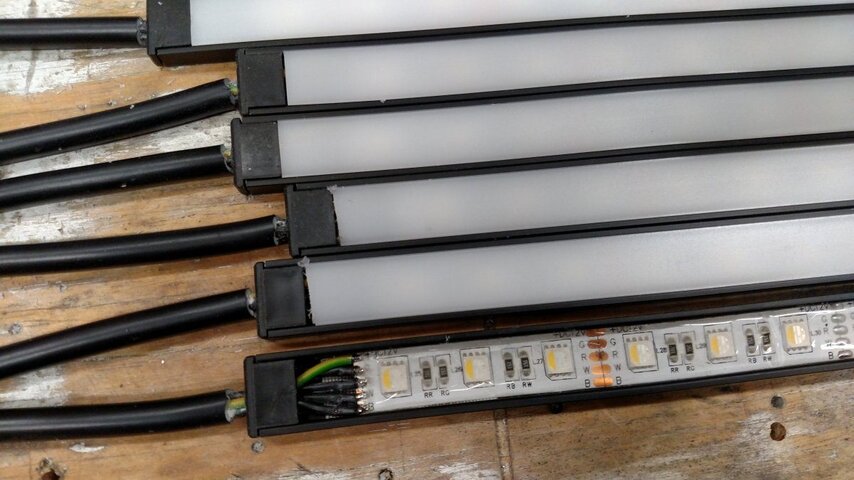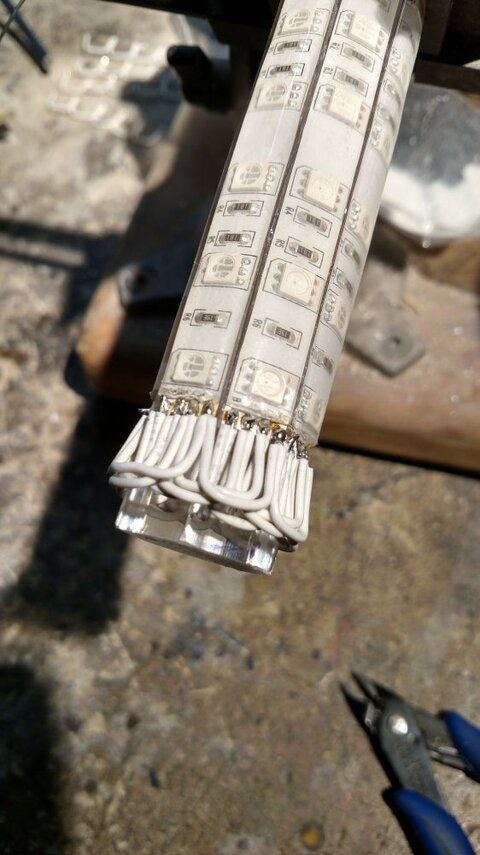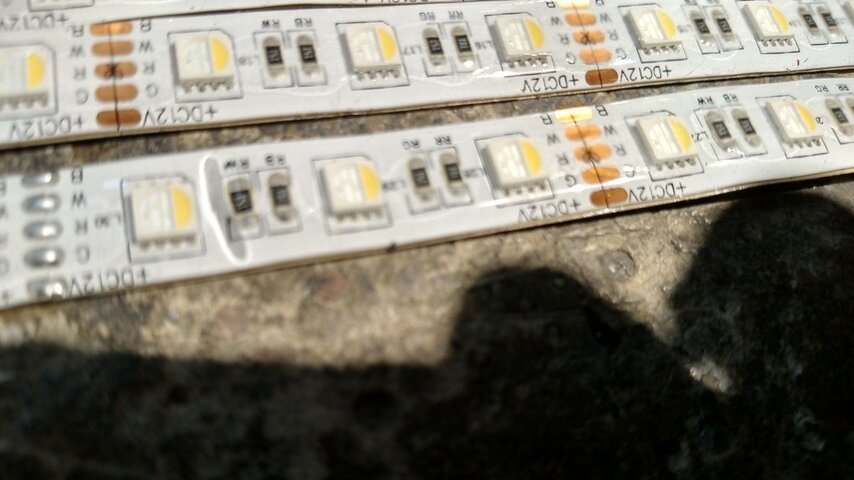Working on a project now with some RGBW tape from a new supplier. Oh' boy did I have notes for the maker!!!
Superbright doesn't yet sell the quad
node, they sell the dual row strip of
RGB+W which would be better if you want high output but perhaps not as much for close in nodes or 12mm
channel fitting. Need a different wider
channel for the Superbright version - believe something like 16mm wide or in just installing two 12mm rows of
RGB and White tape next to each other. Lots of
channel on the market or aluminum channels in general to install onto. Did a prototype
cove light sample a few months back and quad
node was not as high output as the Superbright
RGB+W. Neither were as bright as USLED Supply
RGB high output with Superbright high density white tape laid next to each other. I have not compared high output
RGB USLED Supply with high output from Superbright or other brands.
City Theatrical, GLP and I believe TMB have quad
node for starters. GLP and City Thatrical also have RGBWW tape. RGBWW is five
node with cool white and warm white. Avoid
RGB+W tape from sources like acclaim which is every other
node RGB than a white, than back to
RGB in
line with the same normal
spacing = not best light source. Believe
City Theatrical is quad
node now but initially not - might still be the case to verify.
Thought in reading your initial post you were looking for a RGBW product where the white is dimmable and also dialed in for
color temperature. I am not aware of any such product but the five
node GLP and
City Theatrical do kind of do this - just in a more limited way than actual color temp. dialing in tape..
Just worked with both brands of decoder on projects, both are set up for supplying multiple tapes with that many channels for the tape. Or there is the 24way and I saw I think a 35way decoder on the market (forget who from). Such decoders don't care which
wire is
fed to which tape as long as
fed from the same
power supply. (Good practice don't mix and match different
power supplies with output color channels - you never know how a slightly different output
voltage setting for a different
power supply might back feed in
return.)
City Theatrical also has
LED tape
distro blocks which are otherwise a Marathon
block/
barrier strip for distributing single multiple channels to multiple tapes in the same
channel. In this case UUUUUUU bends and stripping of the
wire. Pain to do but well worth the effort for the opposing side... UUUUUU on the
power in side jumpers of the acrylic hex applied to.
Ibid on feeding tape from both ends at times. Always check the specification of your tape for how many feet of continuous run
fed thru. Three strips of tape
fed thru would normally be a little long and you might be damaging the tape or connection. This MFR specification will indicate from a single attachment
point how many feet you can feed short of both end feeding or in general running another
power cable to the next section. We won't get into
power boosters which are useful for digital tape.
Note dual end feeding is noted to have an expanded
effect on
EMF sound noise.
LED tape produces trauma to sound people and there is no shielding or grounding which will stop it. Experimented a lot on this concept with the electronics engineers. Weird that at some places solutions worked, and at others not. Been over a year with problems of noise without solution. Keep it in mind.
DC low
voltage drop is a thing to design into also for jumpers... My normal
jumper is 18/4 I have custom dipped black, but up to 16/7 dependent on the project and
jumper length. Specifically 18/4 Chinflex
Black Cable 300/500V 80C ORF1804 - with other cable sizes available. Been using it for 11 years now in having it dipped black, and never seen a problem or repair for it. I recommend this for
LED Jumpers. It and the 20ga versions can also directly solder to
LED pads. On the above RGBW project, I'm attaching the 20/5 version directly to the
LED tape. Jumpers are 18/5 @ 15'.
I use solid 20ga
wire for interconnection wiring. Easier to solder to nodes and more stable for short jumpers. Made a set of specific bending jigs for the solid
wire so I get correct length for
wire & strip length.
5Amps at 12v is more loading on a cable than 24v on a
channel. (This much less for
LED tape connections.) A per
channel 5A go for 24v where possible. 5A at 24v given 18ga cable at 15' is also by far different than 5A at 12v at 75'. Stuff to keep in mind.





